New Orvis Ultra-Light Wading Gear: Video
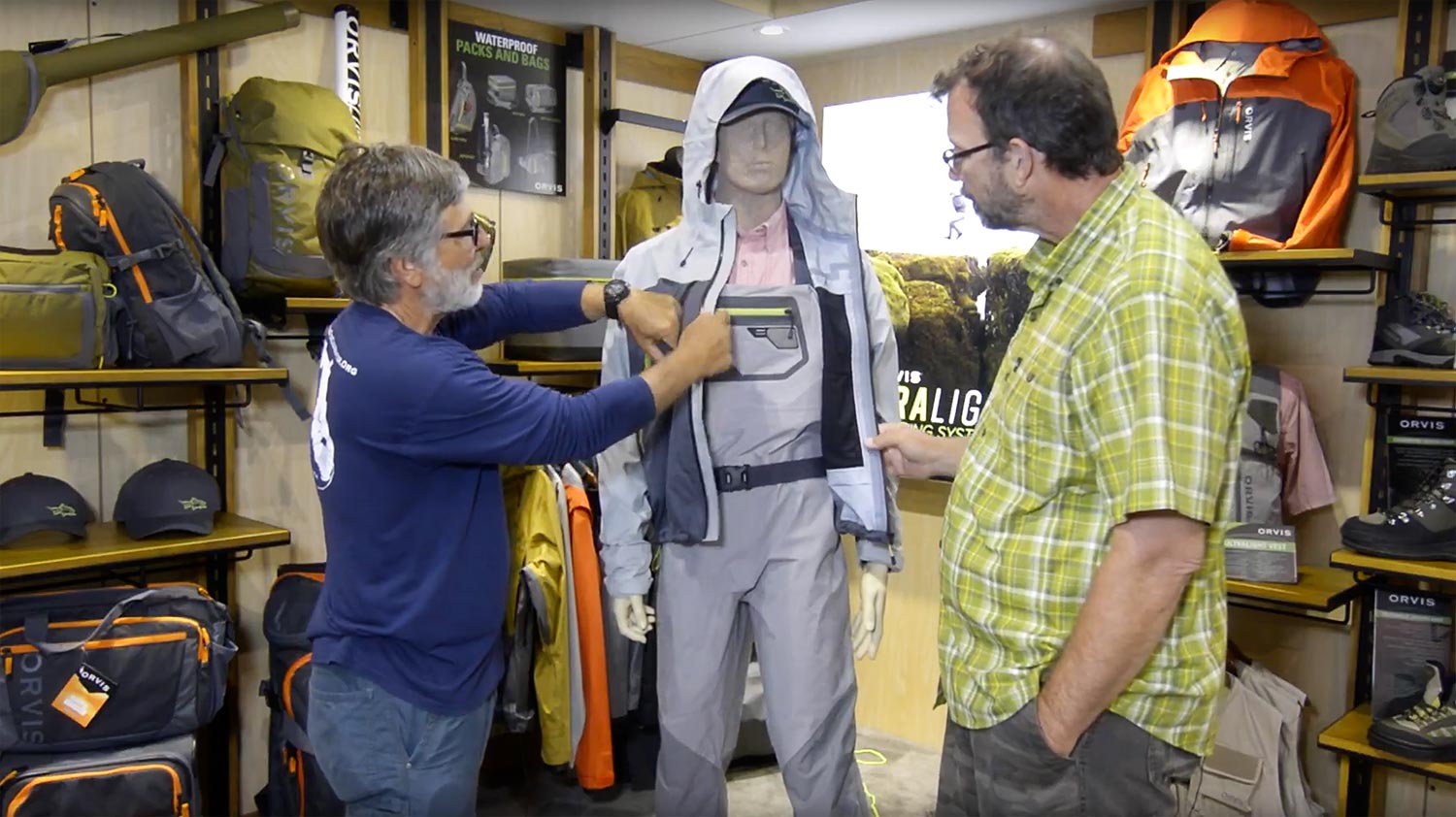
Orvis had some new wading options for anglers on the go.
The new Orvis Ultra-Light Waders, boots and jacket were designed with the traveling angler in mind. They offer durable wading solutions with out the weight or size of traditional wading gear. The new seam technology almost doubles seam strength in the waders and new coatings add durability to the boots. These are a great option for anglers who fly, or just don’t want to be weighed down.
WATCH THE VIDEO FOR ALL THE DETAILS ON THE ORVIS ULTRA-LIGHT WADING SYSTEM.
Read More »Better Down Stream Presentations & Drifts
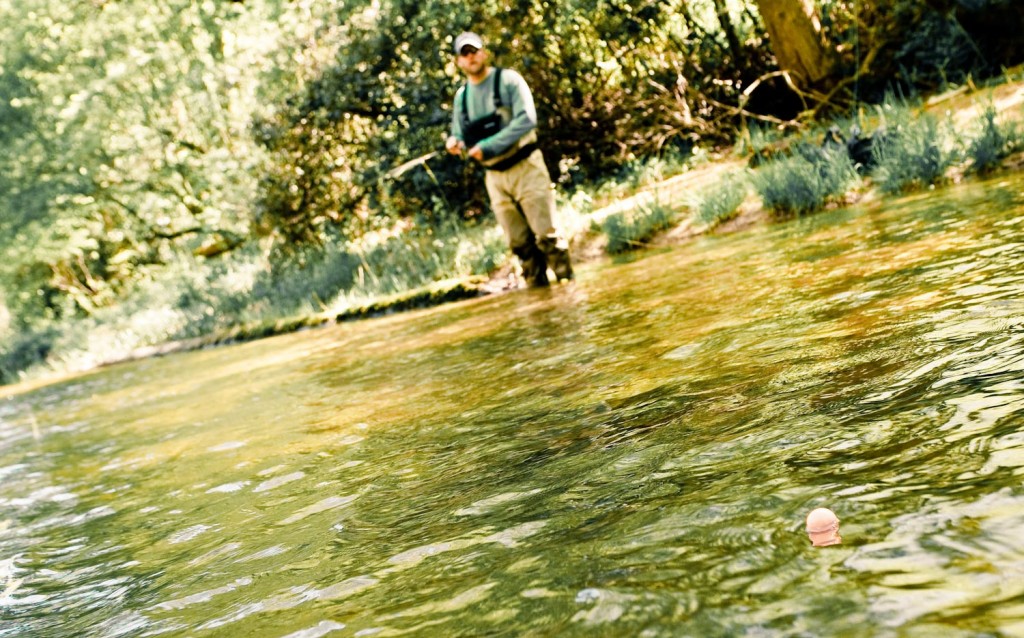
HOW MANY TIMES HAVE YOU BEEN TROUT FISHING AND SPOTTED A BIG TROUT POSITIONED DOWN AND ACROSS STREAM OF YOU FEEDING?
I know I’ve seen it plenty of times on the water, and it always seems like those fish are always positioned just out of reach for me to get a regular cast and drag-free drift over them. Right before my fly reaches the fish, I run out of slack as my fly line comes tight, and I get unwanted drag on my fly. Presenting your flies this way to educated fish can often end up putting them down. If you find yourself in this situation you need to be ready to smoothly and quickly kick out extra fly line out the end of your rod tip during your drift. Executing this properly you’ll be able to maintain enough slack to extend your drag-free drift so your offering can make it to the fish, and have a good chance of being eaten.
I see fly fisherman all the time try to use a shaking motion with their rod tip to kick out extra fly line and extend their drift. Most of the time this doesn’t work very well, because it’s really difficult for you to let out fly line fast enough, and keep your flies from moving all over the place in the process. Watch this video below as I demonstrate how to properly present your fly down and across stream to a feeding trout, and smoothly kick out extra fly line to maintain a drag-free drift. It will take a few minutes for first-timers to get the hang of it, but once you do, you’ll have the technique mastered forever.
Read More »The Stickman P-5 Fly Rod Reviewed
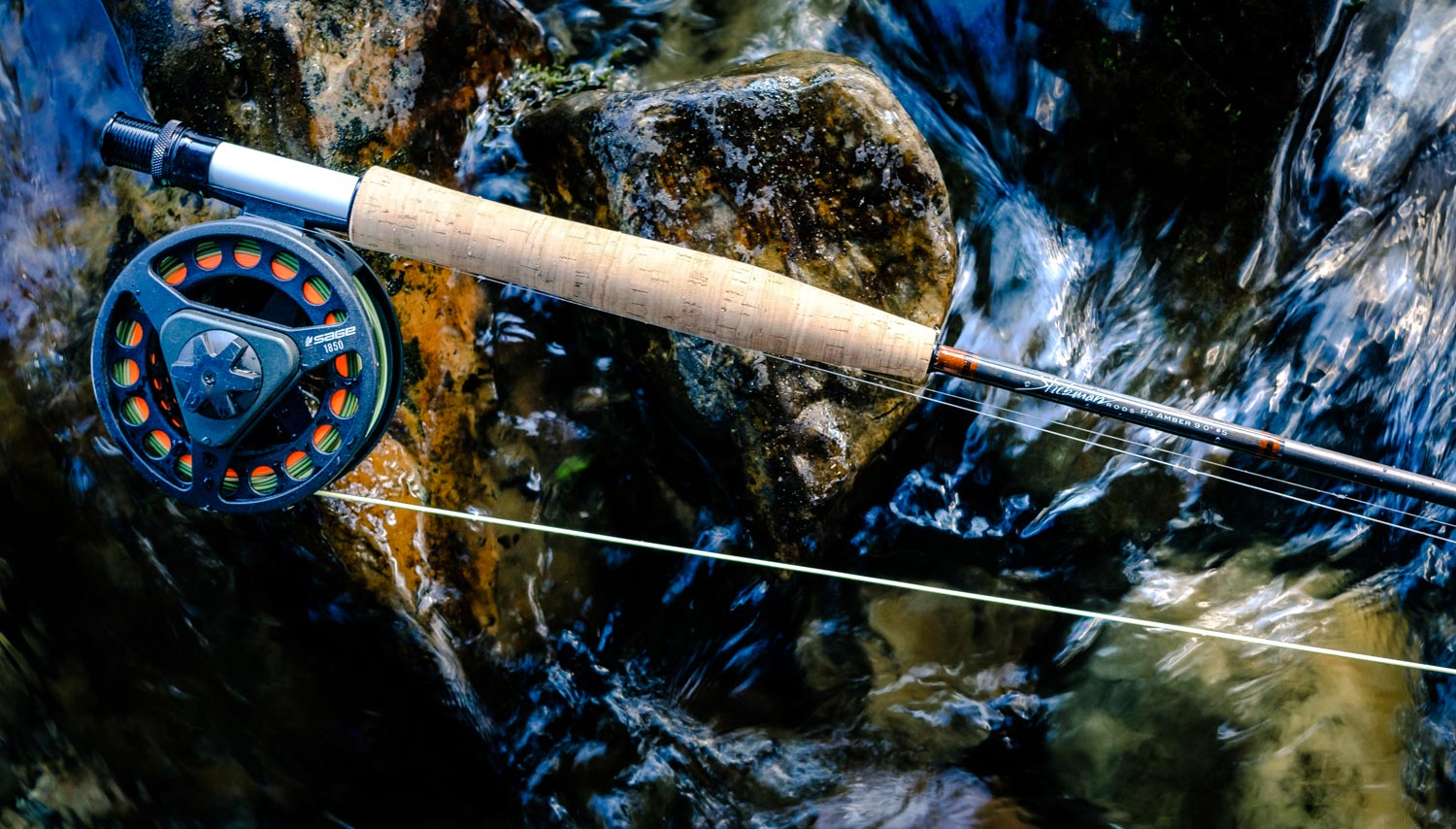
As soon as you take the Stickman P-5 out of it’s tube you know you have something special.
The leather patch sewn to the tube, which bears the name Stickman, and the natural linen rod sock trimmed in black are your first clues that this 9-foot, 5-weight was made with exceptional attention to detail. When you slide the rod from the sock, it does not disappoint. You instantly know that you are holding a hotrod.
The matte finish and transparent wraps are striking. You can tell it’s a very high modulus by the sound the sections make as they touch. The rod is extremely light, due in part to the delicate single foot guides and aluminum reel seat. When you fit it together and give it a shake, you feel power and a blistering recovery rate. You instantly know it’s a caster.
What you will not find out until you get it on the water is what a remarkable fishing tool it is. There are a couple of very cleaver design elements, which make the P-5 a unique tool. Being a Hungarian company, Stickman seems to be free of conventions, which dominate American rod design, giving them a very clear vision and allowing them to produce a rod which is more than it might appear.
My first assumption was that this rod would be another fast-action distance casting rod. The kind of rod which shines at the casting pond, but not necessarily on the river. While there is plenty of power here to launch a line, you quickly find that the emphasis is on precision and not distance. The P-5 will not let you down when you need to reach a distant riser but that’s not what you’ll love about it. When you start to target pockets and fish under stream-side cover you’ll find that the P-5 feels like a laser pointer.
The P-5 is capable of making loops which are remarkably tight and clean. I want to be very clear on this. Casters make tight loops, not rods, but all rods are not equal. A great rod will not fix your casting problems but it will reward good technique. The P-5 does this in spades. On closer inspection I’ve developed a theory on how it’s done.
Read More »Sunday Classic / Take the Time to Research Your Boat Ramps
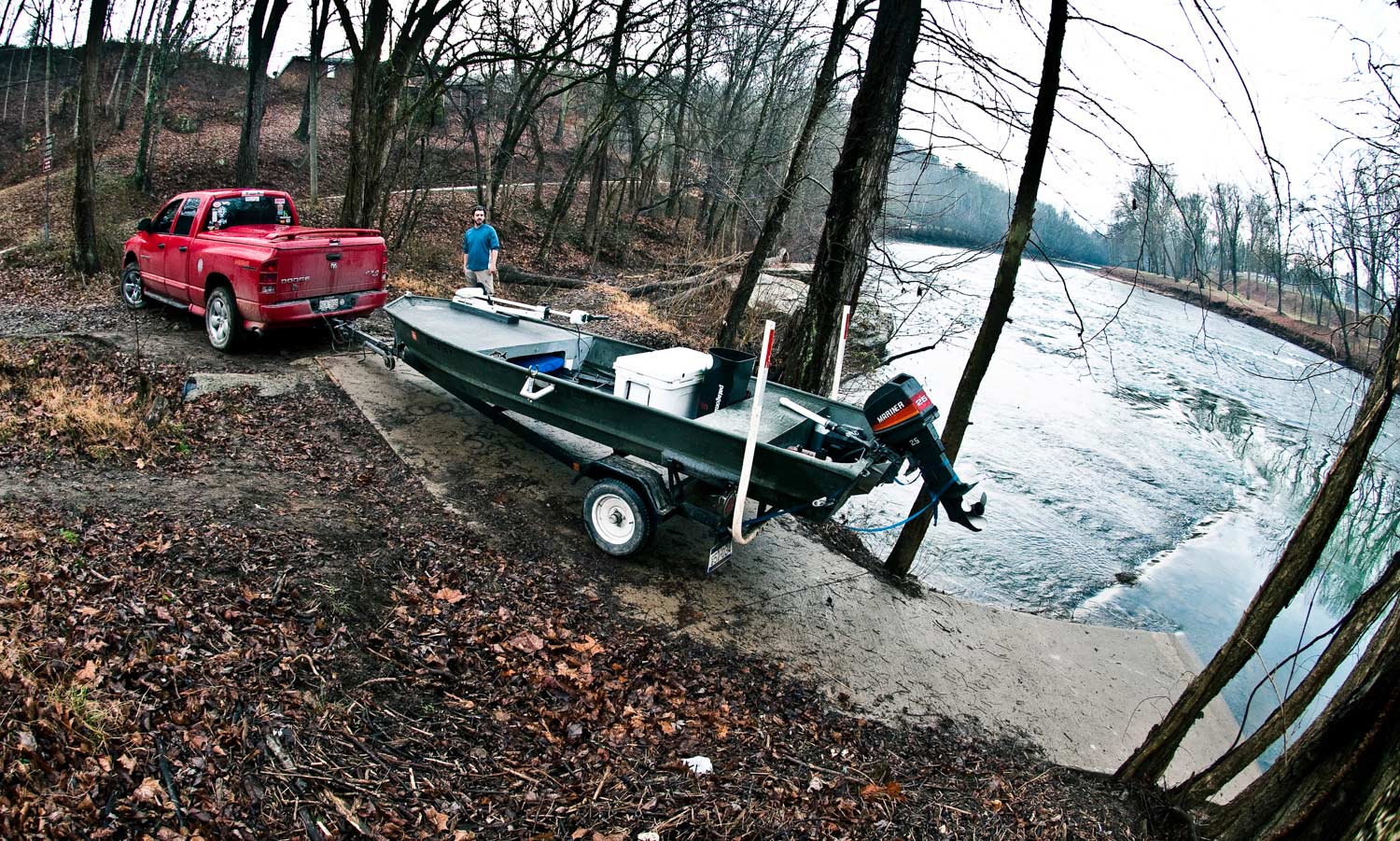
It’s really easy to get excited about a last minute trip when your buddy calls and says the fish are biting and then not take the time to research the logistics of where you’re going to be fishing. Much of the time things work out in the end when we’re doing what we love but every now and then, no matter how hard you try to make things right, you’re bound to get screwed. That was the case for us during our final day of our recent musky trip with our good friend Charlie Murphy in West Virginia. Due to poor water conditions, we had to go with a Plan B and change our fishing location the final day of our trip. Charlie had taken an friends word that we could launch our boat at the designated spot with no problem. Unfortunately, his acquaintance thought we were launching a drift boat, not a john boat, and that turned out to be and impossible task, without the aid of a cheap pvc roller and a 20 foot section of rope. Now, I’m known for being able to back up a truck and trailer with the best of them and until this day, I was batting a 1000%. So much for my perfect batting average of backing up, because this midget boat ramp put it to me. I tried like hell, but it just wouldn’t fit.
Read More »Saturday Shoutout / Northern Exposure
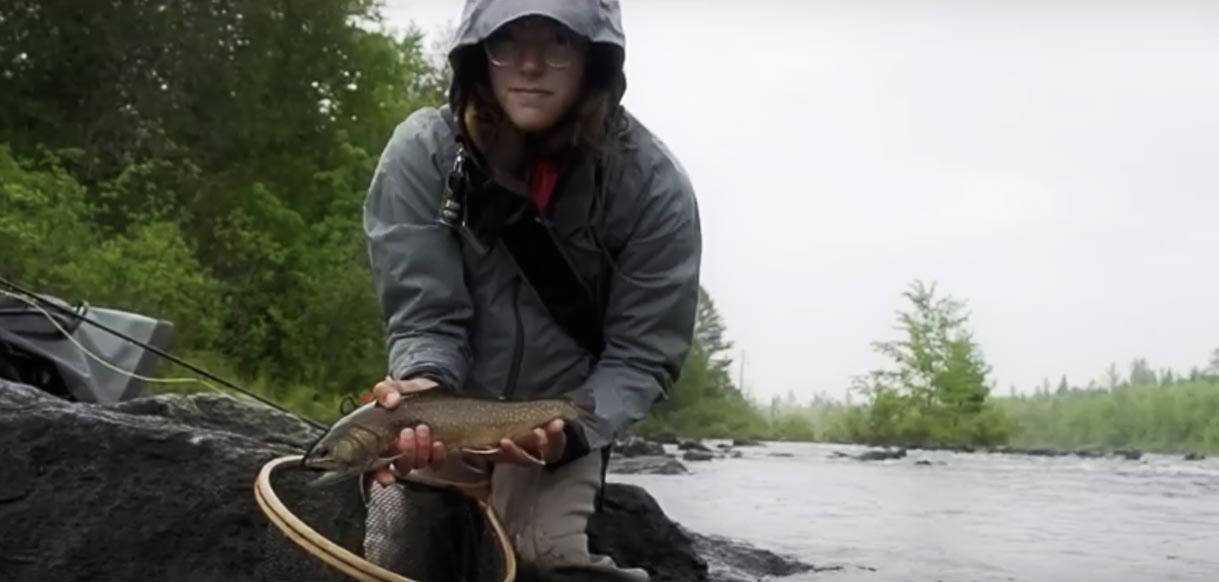
“Anyone who says American no longer has big brook trout, has never been to Mane.”
In this beautiful and thoughtful film Chase and Aimee Bartee, of Van Life, chase monster brook trout in one of the most magical fisheries left in the U.S.. I’ve fished this spot and can tell you, it’s amazing but not every day. Chase and Aimee have perfect timing and get the best Mane has to offer.
ENJOY “NORTHERN EXPOSURE”
Read More »Simms Solarflex Armor: Video
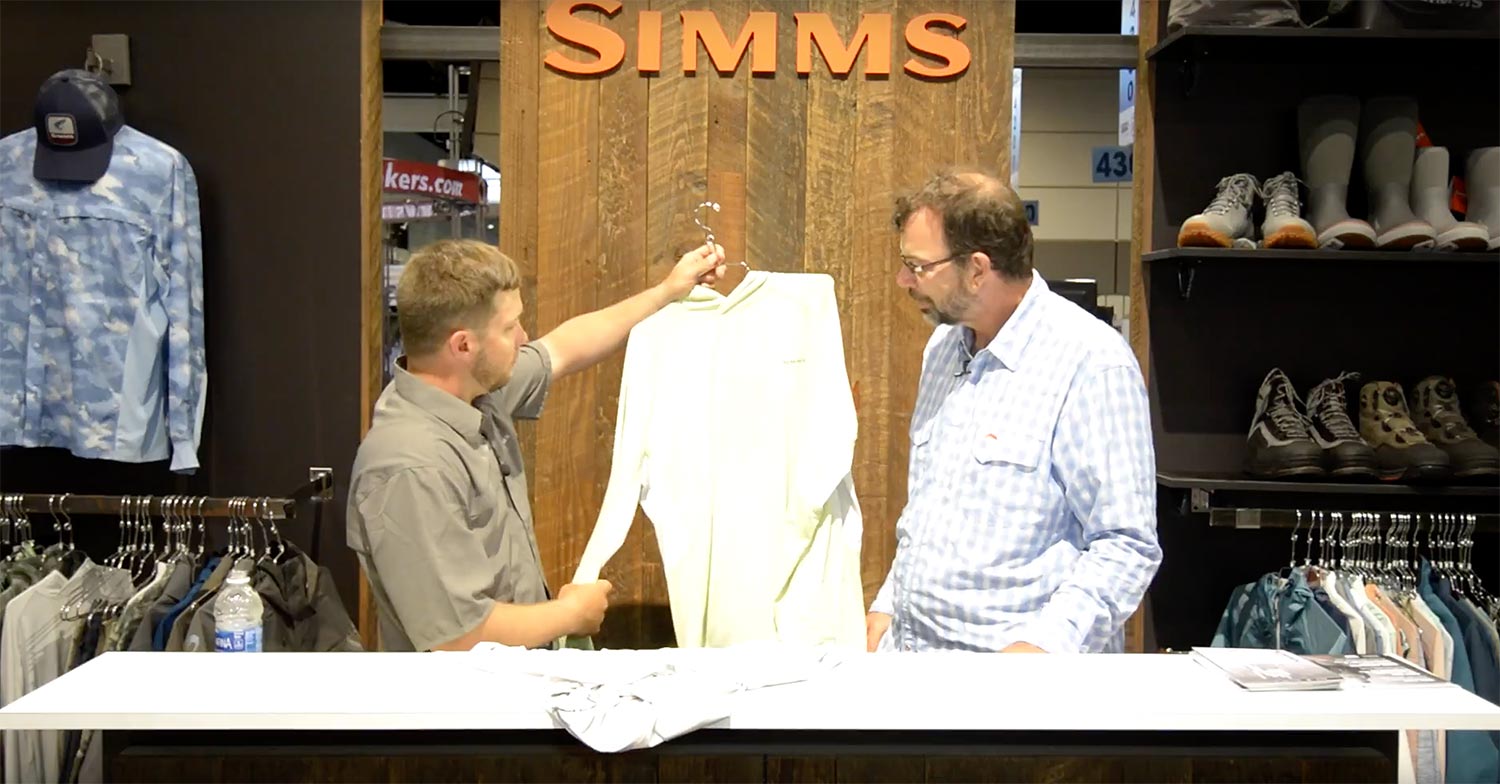
Simms new Cool-Core technology keeps you cool when the heat is on.
Staying cool while protecting yourself from the damaging rays of the sun is always a challenge. The new Solarflex Armor from Simms has a couple of tricks up it’s sleeve to do just that. The fabric has a remarkable ability to cool down with the slightest moisture. That means that when you sweat, you get cooled down right where you need it. We tested it on video and it was pretty remarkable how well it works.
In addition the new Solarflex Armor has the best integrated sun gator I’ve seem and a sun hood. These combine with air vents and a lens shammy make this a pretty functional piece of flats gear.
CHECK OUT THIS VIDEO FOR ALL OF THE FEATURES OF THE SIMMS SOLARFLEX ARMOR.
Read More »The Only Two Caddis Pupa Patterns I Really Need to Carry
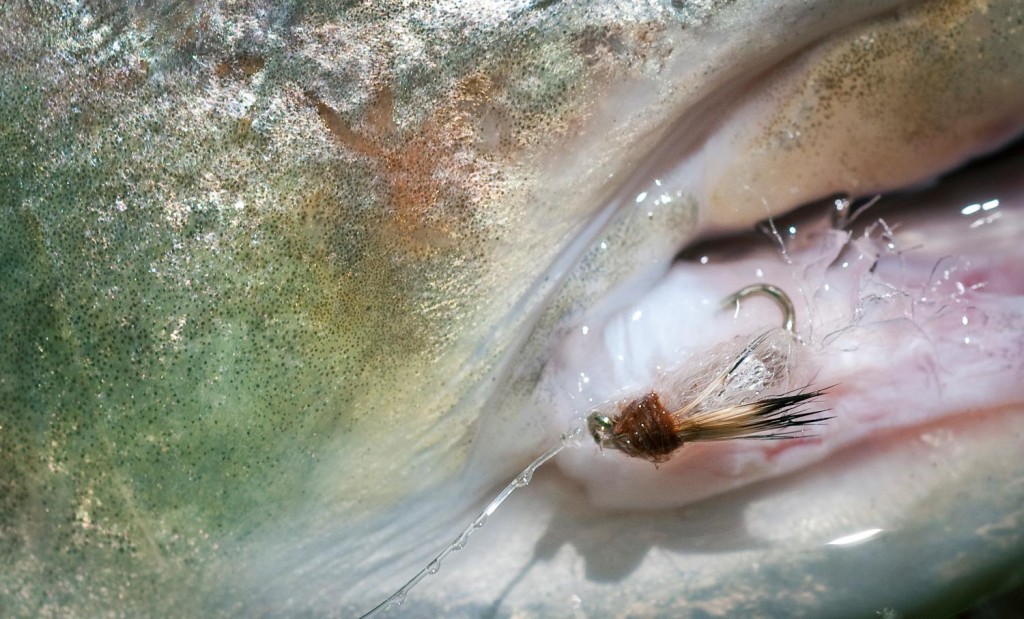
Caddisflies, who doesn’t love them? I can assure you trout sure do. Tying a caddisfly imitation on, is usually not a bad move on any trout water you visit. Globally, there’s thousands of different species of caddisflies, and that fact alone, one could argue caddisflies are the most abundant and popular aquatic insects found in trout water. If I remember correctly, my first trout landed on a dry fly was with an Elk Hair Caddis. That was a long time ago, back when I knew nothing about fishing caddis pupa patterns and how important they were. I’ve since, with the help of the great Gary LaFontaine, author of the famous book, “Caddisflies”, deepened my knowledge of this aquatic insect, and I’ve built a whole new appreciation and respect for the importance they have in a trout’s diet. Year-round, but particularly during the spring, early summer and fall, fly anglers should be well stocked up on caddisfly pupa fly patterns.
It’s safe to say the most effective way to catch the trout during a caddisfly hatch is to fish caddis pupa imitations. I’ve got many different caddisfly pupa patterns in my fly box, but over the years, LaFontaine’s deep sparkle pupa and emergent sparkle pupa have caught me more fish than all the other pupa patterns combined. These patterns should be in every trout anglers fly box. Gary LaFontaine did an excellent job of researching and studying the characteristics, underwater look and behavior of emerging caddis pupa. He used aquariums with living caddisfly specimens, and spent countless hours scuba diving on rivers during caddisfly hatches to gain accurate insight of what the trout see during a caddisfly hatch. He then took the research and data he collected and hand picked fly tying materials that he could use to design and tie accurate caddisfly patterns for each life-stage of the aquatic insect. This was an astonishing feat that took Gary LaFonataine twenty years to compile and complete. We all owe him a great deal of gratitude and thanks for all his hard work. Without his contributions who knows where we’d be today in understanding the life-cyle of caddisflies and going about imitating them.
Read More »The Muddler
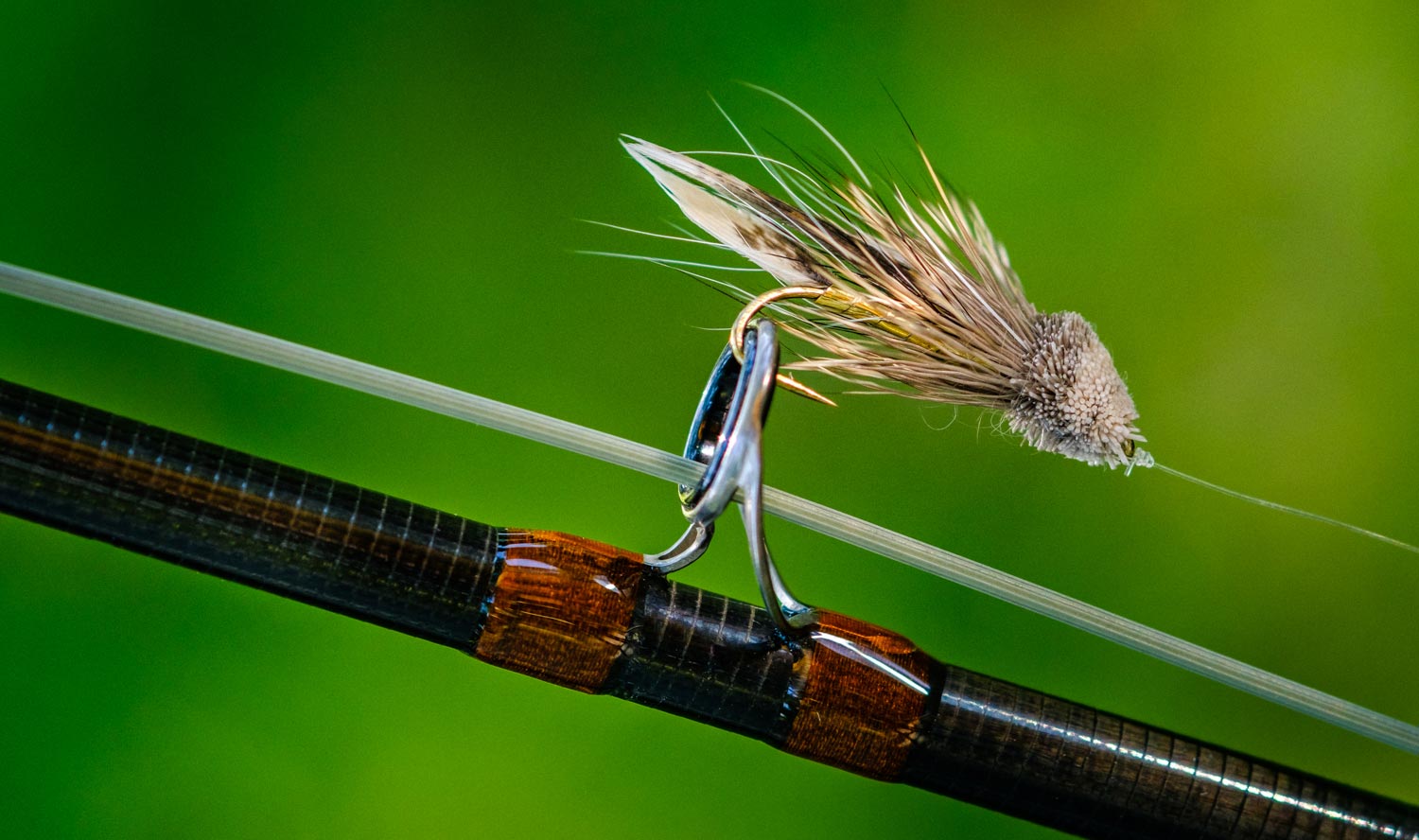
By Jason Tucker
It was a beautiful, bright day, the river running high and clean.
I was fishing near the mountainous junction of the Carolinas and Georgia on a beautiful trout stream and not having much luck. I caught a couple of small stockers on a nymph rig, but the bright sun and high water seemed to be keeping the bugs at bay, and the fish weren’t very active, either.
Halfway through the morning I missed a hook-set which sent my rig high into the rhododendrons lining the bank. I’m not as good of a climber as I used to be, thanks to evolution, so I snapped it off and considered my options. As I dug out my nymph box to re-tie, I spied a lone muddler minnow lying in the bottom of the pocket. I cut my leader shorter and tied it on rather than going through the rigamarole of tying up another two-fly dropper rig.
I wasn’t in what I would call classic streamer water, but rather, in a fast, broken cascade of the type that regularly punctuates these mountain streams. Never one to waste water, I started fishing the pockets before moving to the big hole above me. On the third cast a shadow moved, and then materialized
Read More »Sunday Classic / Camera Grip
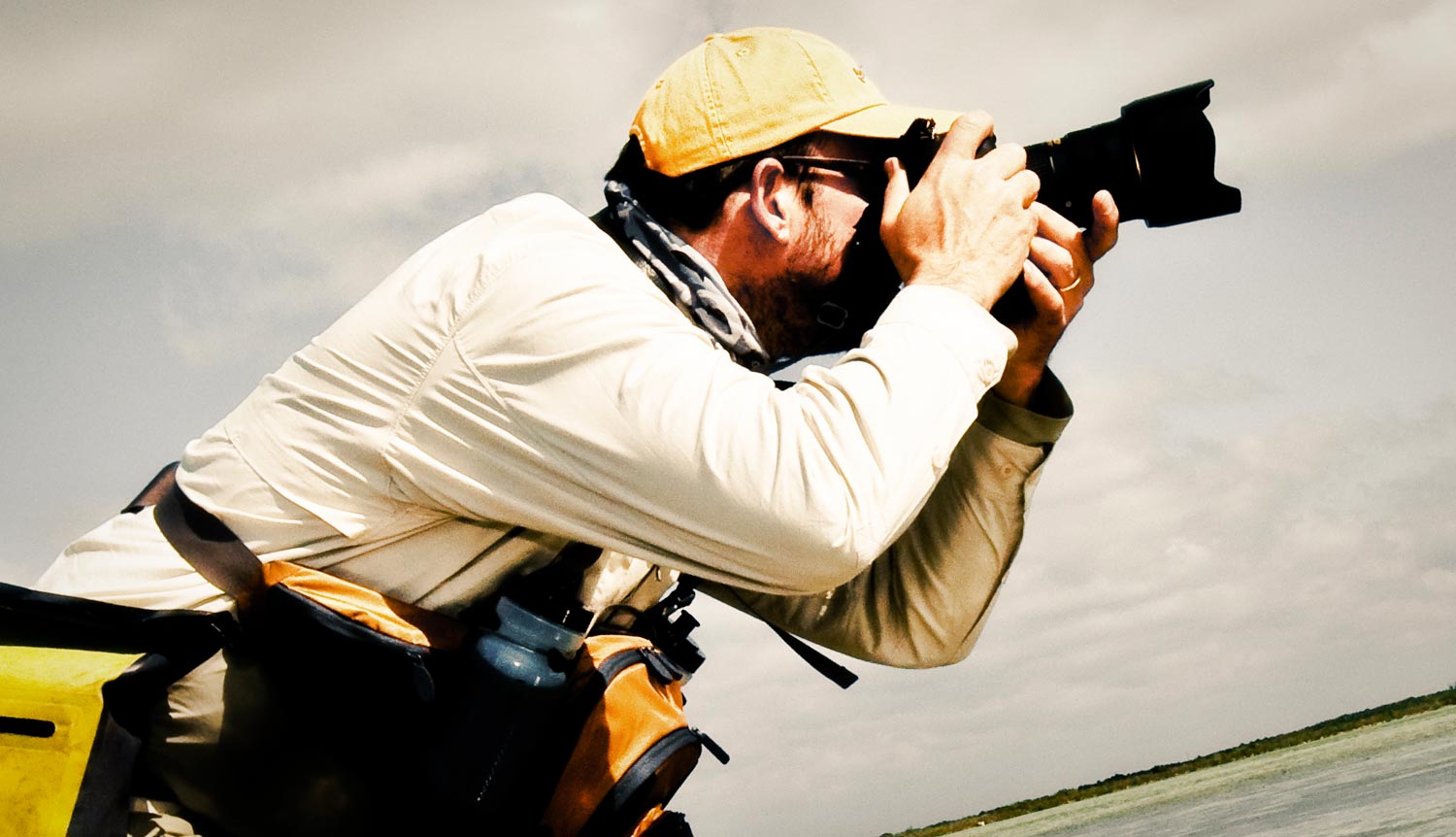
THE WAY YOU HOLD YOUR FLY ROD AFFECTS YOUR CASTING, RIGHT? THE WAY YOU HOLD YOUR CAMERA MATTERS, TOO.
Most people never stop to think about it, but I remember being taught in school the proper grip for a camera. First off, all SLRs are right handed. If you’re left- handed, you will just have to get used to it. To properly support the camera, your left hand should be positioned palm-up and level and the camera — whether oriented horizontally or vertically — rests in your palm. Your left thumb and index finger curl up to the lens to operate zoom and focus features. Most cameras have an ergonomic grip on the right side that leaves your index finger ready for the shutter release, and thumb free for the adjustment wheel. Let the left hand support the weight of the camera. With large telephoto lenses it may be necessary to move your left hand forward under the lens for balance. With a good grip you
Read More »Saturday Shoutout / Ed’s Journals
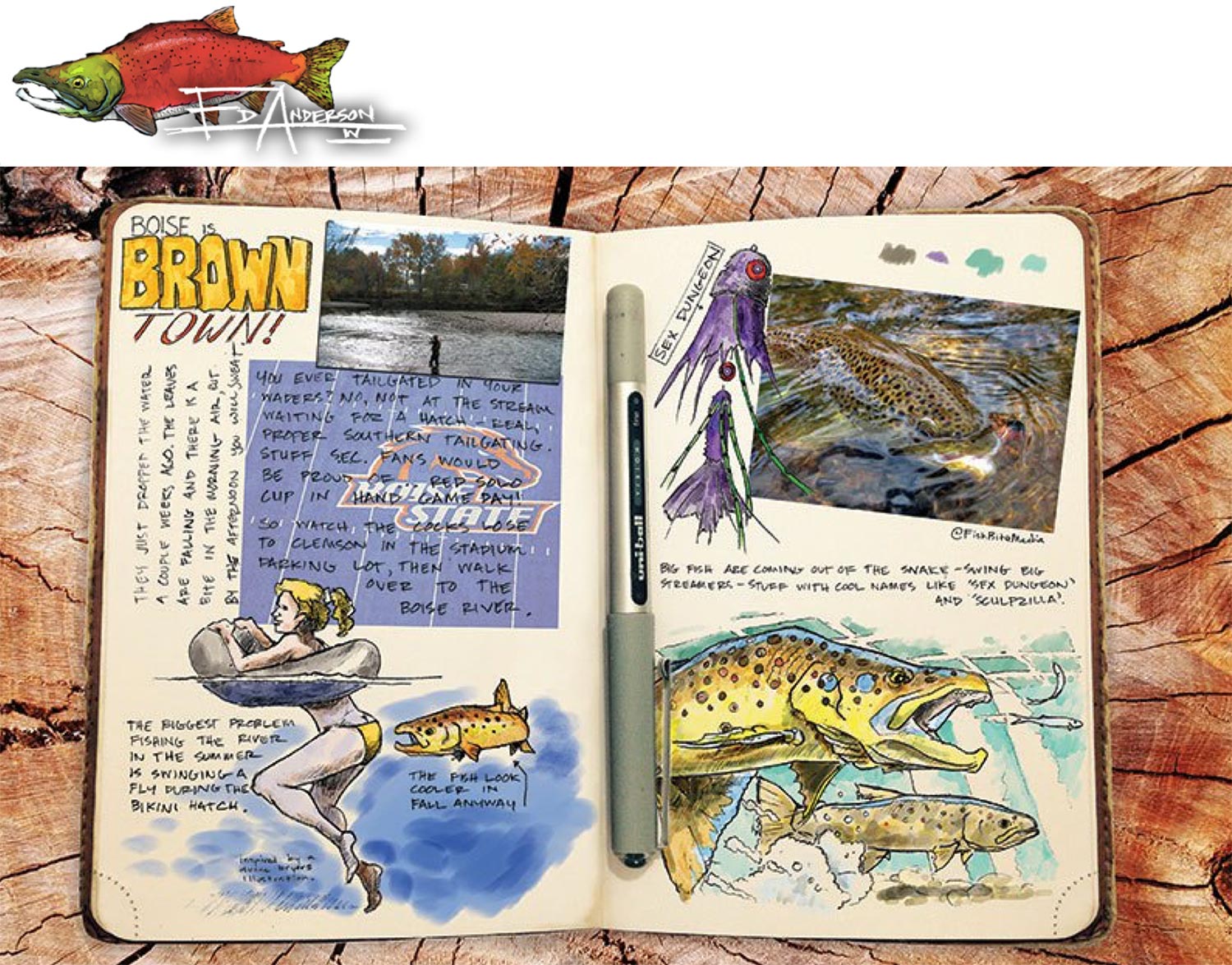
Ed Anderson’s lively and gestural illustrations capture unique moments in fly fishing.
If you follow Gray’s Sporting Journal or BTT, you’ve probably seen Ed’s distinctive artwork. It’s lively, colorful and immediately recognizable. Idaho or Mozambique, brown trout or bull riding, wherever Ed finds his inspiration, his energy and enthusiasm are immediately recognizable.
Many of us keep fishing journals but I’d venture to guess they aren’t as cool or as fun to look at as Ed’s. Having made a couple of the trips Ed captures in these journals, I can tell you I certainly enjoyed them. Take a few minutes to check them out and I’m sure you will too.
ED’S JOURNALS
Read More »